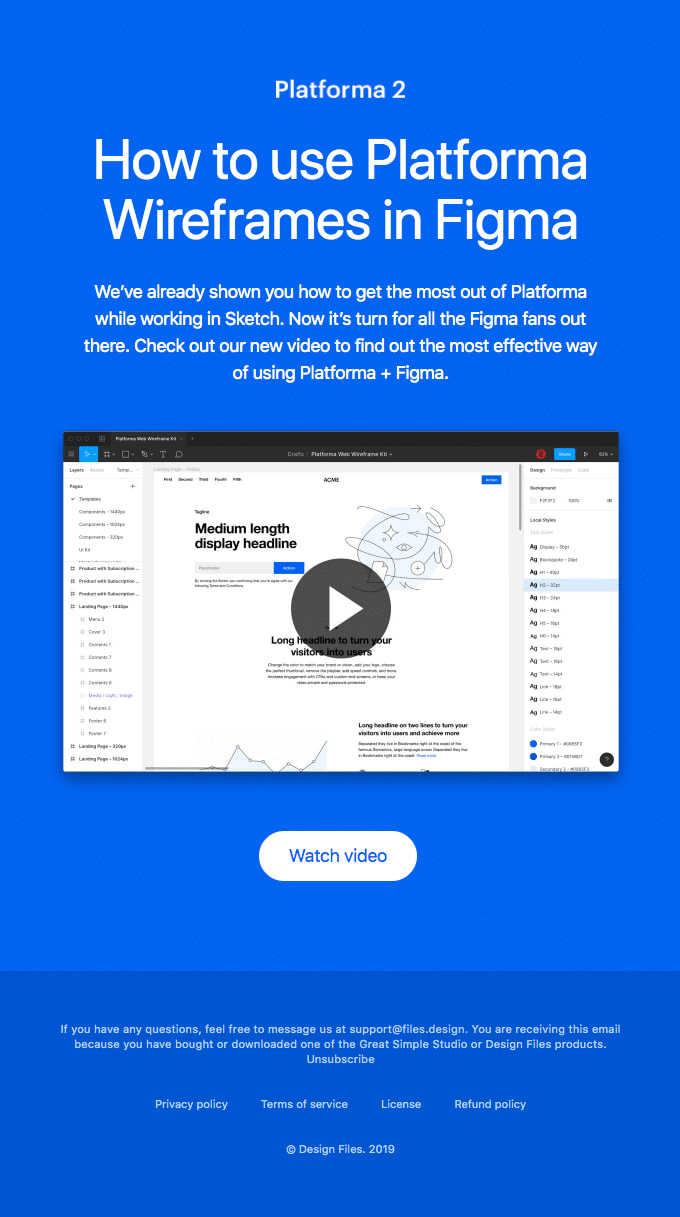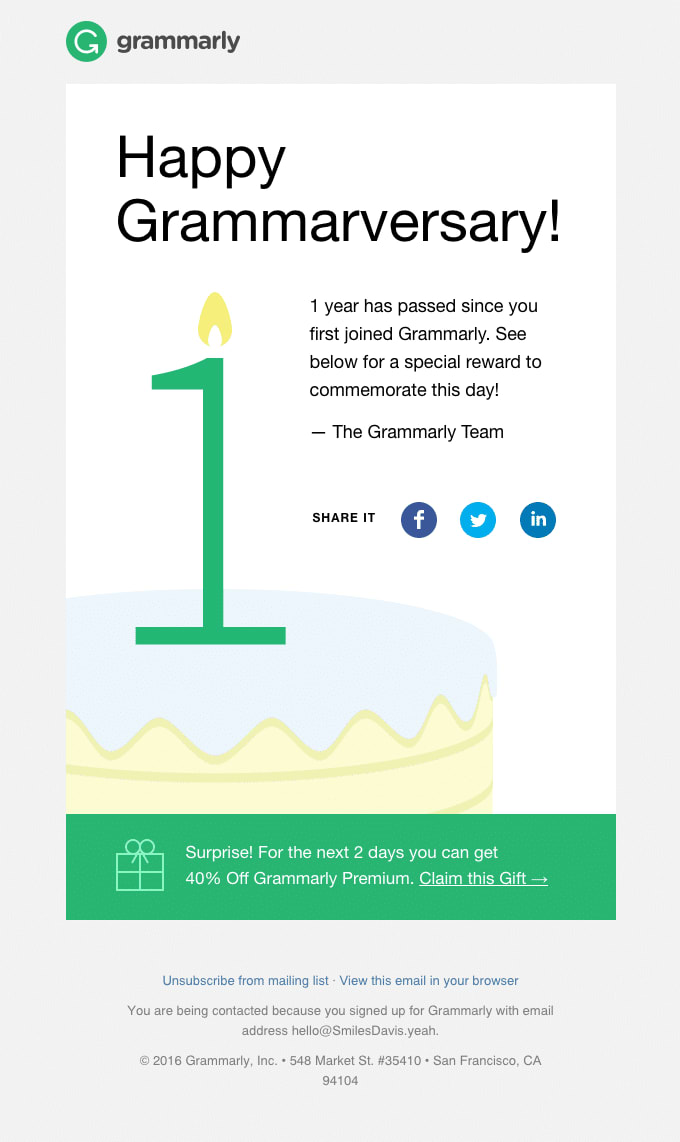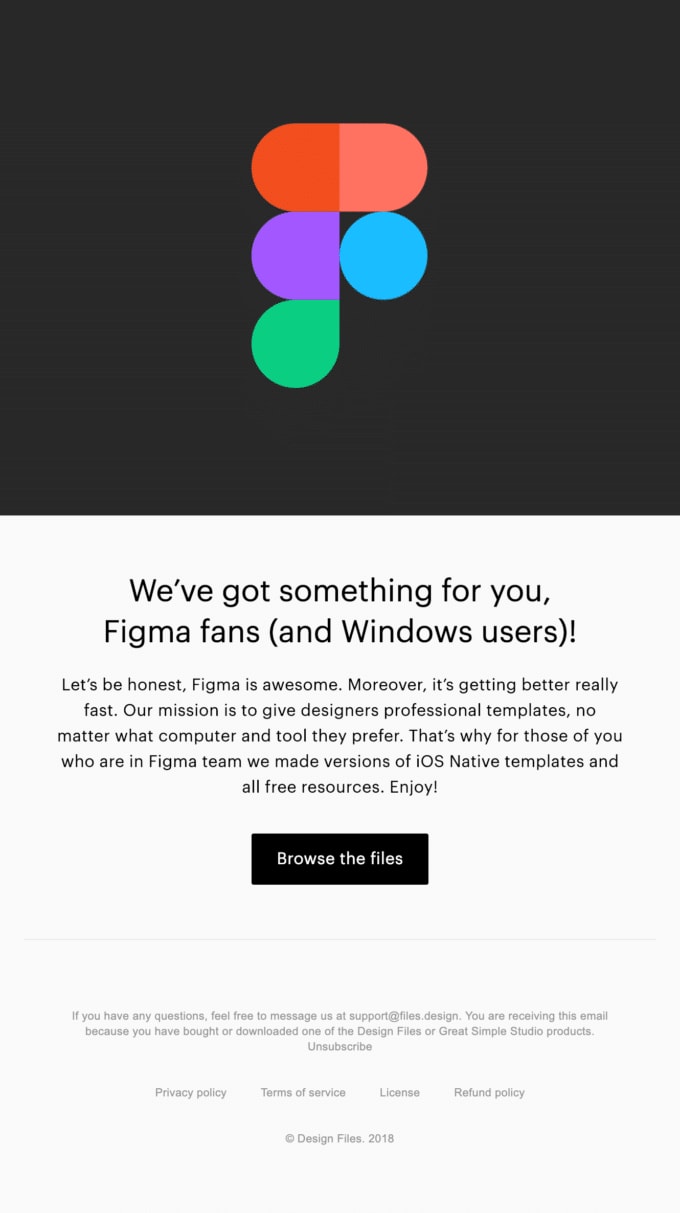“Hey, %%First Name%%! We are happy to have you with us and would like to make using our app on your Mac even more pleasant!” Have you ever received a similar message from a newly installed app? (and in the worst case, you used Android.)
You wanted the app, but now feel frustrated and don’t know if you should entrust your data to this company at all. This is an example of a failed personalized email with broken dynamic content. Whether you are a developer building your app as a small startup, or a marketer of a growing brand, you do need a well-working email workflow. Your clients are waiting for their order confirmations, limited offers, and even tips on more efficient usage of your service. Don’t let them choose your competitors.
What is personalized or dynamic email content?
Personalized mails are messages tailored to a specific user. Notwithstanding the name, personalized emails are a part of automated marketing. They are created with special templates that become individual due to dynamic content. Username, date of birth, location, behavior in the app – each of these parameters changes from user to user and may affect the type of information included in your message.
With dynamic content, you can personalize emails with user details or even show different information to different users. The first option allows you to include and replace user’s information in the template. It’s done with variables (they are also called placeholders or merge tags.) The most common example is sending a newsletter to a list of subscribers and inserting their first names to the welcoming sentence. In this case, you use one template and add “First_name” tag for personalization.
This method applies both to bulk and transactional emails. For transactional emails, you add event-driven mechanism, which works according to users’ actions, and triggers a definite template sending. For example, you sign up for an app and receive a welcome email.
There is a more advanced type of personalization – content insertion. It leverages the “if - then” logic and allows you to show different pieces of content to different users. In general, basic template stays the same but the content of specific sections varies. For example, you are sending your blog updates. For marketers, you will show a list of articles published in the “marketing” category and for developers – in the “development”. At the same time, “product updates”, header, and footer will stay the same.
Types of email personalization and why you need them
We are accustomed to seeing our names in newsletters or order details in confirmations. With the development of digital trends, we are getting more and more options to make automated messages individual. There is a relatively new term – behavioral marketing automation.
Why should you care about this? At least, it costs five times more to acquire a new customer than retain an existing one. Well-established workflows and as a result, happy customers, is another important aspect of your product’s success.
Here’s how you can treat your customers better by sending the right emails:
- Welcome emails. You send a friendly account confirmation to make your new subscriber continue using your service. For more personalization, you might need to know the name of your user, their location, preferred language, as well as the device they use.
- Onboarding emails. This is a wide group of messages mostly designed to improve customer satisfaction. The best practice is sending a series of emails, which helps a user to know the app better and get the most of it. Track users’ behavior to offer them functionality that they haven’t discovered yet or share knowledge about interesting use cases.
3. Anniversary emails. Why not celebrate your users’ birthdays and anniversaries with your product by offering a discount? If your business is an e-commerce one, the opportunities to motivate your customers to make a purchase are limited by your imagination only. Propose them Christmas gifts, International ocean day discounts, summertime sadness promo… 🙂
4. Product updates. Did your users ask about a missing feature and you have just released it? Or did they submit a support request which could have been better solved with your new functionality? Keep this information in your database and let them know about your updates. If your feature solves users’ pains, they will pay for it. If you sell clothing, you can send new collection announcements based on the preferences of your customers (men’s or women’s collection, sport or casual, etc.)
5. Messages based on previous purchases or app usage. If someone bought a fridge in your online store once, it’s not likely that he or she would need another fridge in a month or so. But it could be a good occasion for offering other kitchen appliances. Or if you are promoting a platform for email sending, your user might be closer to reaching the sending limit. It’s time to offer an upgrade!
6. Time-sensitive offers. Your customers have recently viewed several items on your website but didn’t make a purchase. Offer them a discount for these things valid for a limited period of time!
These are just a few examples of messages targeting specific users. There is one standard classification of personalized emails: you can be creative and generate new use cases all the time!
How to create a personalized email
Personalized emails require investments, but they are worth it.
Define which elements of your email should be dynamic. To start, draft the most attractive use cases of personalization and define which elements of your messages should be dynamic. Check the list in the previous paragraph for inspiration.
Collect data about your users. Again, by having enough users data, you can create personalized messages that will impact customer engagement. So, the collection of the required personal information is a critical step. Don’t forget: foremost, users should give you their consent!
By accepting cookies on your website, subscribing to your newsletters, adding their dates of birth to their profiles – your users should agree on processing their data. The more you know about your users, the better you will match their needs with your offer. Here are several ideas on how to get the information in addition to analytics and tracking:
- Social media (ask to add this info to their profile in your app or offer to sign up via Facebook.)
- App features (offer wider functionality in return for their data. Do you remember granting access to your location, Google photos, etc.? It’s a great example.)
- Surveys (here you can ask whatever you need but first you should think about how to motivate users to share their details with you.) Make technical preparations. In short, choose a system to store your users’ data and integrate it with emails. Or, you can build your own. Let’s review the options in more detail.
How to send personalized email to multiple recipients
In general, there are three main ways to handle users’ data and use it for emails personalization. The choice usually depends on the type of business, company size, and general approach to operations.
CRM system
From small businesses to large corporations, customer relationship management systems are designed to streamline sales processes. There are hundreds of options, from complex and advanced systems like Oracle Marketing Cloud or Salesforce to the open-source and free to use solutions like SuiteCRM. If the system has an integrated marketing automation, then you will be able to create personalized emails.
With all the evident advantages of CRM systems, you risk getting trapped in vendor lock-in. In most cases, it would be extremely difficult to transfer data from one system to another or get the freedom of using third-party services.
User Analytics Platform
Product analytics is not directly connected with user engagement. But its main goal is to understand users behavior better, improve the product, and lead the user through the shortest way to conversion. Such tools like Kissmetrics or Mixpanel collect behavioral events for each user, group users according to their actions in the system, and help you to send truly personalized and targeted emails.
Another option is to integrate analytics with email sending, and many tools offer such a functionality. It allows you to try different combinations of tools and not to depend on the vendor.
One of the latest trends is using artificial intelligence, machine learning, and data science in marketing. Learn how such technologies can help in leveraging your email marketing from this article.
Email sending platform
In this segment, you will also find a wide list of options. At least, each of them allows you to create a segmented list of users and use simple merge tags like username, company name, etc. With the growing competition and popularity of personalization, the number of automated marketing platforms increases as well. They offer you to keep users database in their system and create custom tags and fields to gear your campaigns.
Automation means that you can build custom algorithms with “if - then” logic and the system will send assigned templates triggered by a specific user’s action or status. Convertkit, GetResponse, Mailgen, Sendinblue are just several examples of tools in this category.
Here you can face the same problem: the more complex solutions you use the more painful your migration could be.
Custom solutions for creating your own templates and workflows
This is the most flexible option, which requires definite efforts and skills, though.
Depending on the stack of technologies you use, you can build your personalized emails templates with the help of templating language, email framework, or HTML template. They operate variables for dynamic content and also offer solutions to include logic in your templates.
For example, Mailjet created its own template language as well as an email framework, MJML. You can build independent templates and send them with any provider without a need to stick to Mailjet. MJML is the most popular responsive framework, which uses custom tags. On GitHub, you will find several comprehensive tutorials on building personalized emails including abandoned cart and e-receipt.
Another option is Foundation for Emails, which is also an email framework with custom tags. To get more details on email frameworks and HTML templates, refer to our Choosing an Email Framework for Your Campaigns article.
As for template languages, Handlebars and Jade are among the most popular ones.
All of these options accept your users’ data in a JSON file.
How not to mess up with dynamic content
Personalized emails bring your communication with customers to the next level. When they work. The more conditions and dependencies you use, the greater the chance of breaking something.
Whichever method of building and sending personalized emails you choose, thorough testing is a must.
If you created personalized email campaigns with the help of a marketing platform, you will get the default testing options. In most cases, creating the live testing email campaign will work best. Default test emails usually don’t see dynamic content until the whole list or the API call is used.
If you coded your template on your own, you should be even more careful with it. First of all, test
- if emails are sent at all
- if sending works fine, check if messages go to the right addresses
- and then preview generated email content to verify the dynamic variables
As a rule of thumb, verify that your template doesn’t exceed the maximum email file size and make sure it doesn’t trigger spam filters.
The safest way to perform all these types of tests, is to run them in a pre-production environment. You can set up your own infrastructure or use a tool like Mailtrap, which can be integrated as an SMTP server or via API. It will instantly collect all your test emails in the virtual inbox, so you neither flood your inboxes with test emails, nor spam your customers. In addition, Mailtrap displays your email preview, raw data, email size, and more. Besides, it supports Bcc testing so that you can also use it for tracking sent messages on production. For other options, check our Email testing checklist, which features 38 tools for various types of email testing.
Thank you for reading Mailtrap article on personalized emails!












Top comments (0)